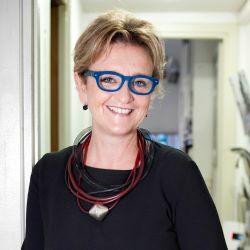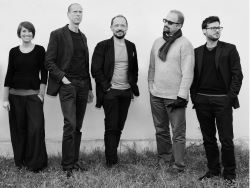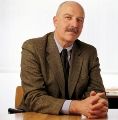Biographical notes
Attilio Stocchi graduated in 1991 from Milan Polytechnic, where he studied under Vittoriano Viganò.
He lives and works in Milan.
His design career, ranging from open spaces to monuments, art venues, environmental systems, exhibits and installations, maps out a journey of experimental research in which word and shadow are fragments of the architectural construction process.
His many open spaces include: Aurea (2001), Piazza Mario Codussi in Lenna (BG), (Abitare, 400, November 2000); Palinsesto (2002), Piazza Angelo Maj in Schilpario (BG), (Abitare, 440, June 2004); Polla (2005), Piazza Libertà in Spirano (BG), (Abitare, 465, October 2006); Galaverna (2005), Piazza Castello in Castel Rozzone (BG), (Abitare, 465, October 2006); Viridis (2006), Piazza San Fermo in Almè (BG), (Abitare, 474, July-August 2007), which won an Honourable Mention for Public Spaces and Infrastructures in 2009, Gold Medal for Italian Architecture.
He has conceived and curated numerous monument metamorphosis projects including: Lucegugliavoce (2007), a performance in which the statues located on the spires of Milan Cathedral dialogue with each other, transforming the building into an open-air theatre (Domus, 909, December 2007; Abitare, 474, July-August 2007); Librocielo for the Milan Furniture Show (2012), a multimedia event animated by the voices of the books conserved in the Ambrosian Library and Art Gallery, which earned an Honourable Mention for Installations, Gold Medal at the Triennale 2015.
His interiors include Trafitta (2002), Loft in Ciserano (BG), (Abitare, 418, June 2002; Loft, Federico Motta Editore, 2003); Iride in Milan, (Abitare, 474, July-August 2007). His parks include ParcoLumen (2011), in Lumezzane (BS), which earned an Honourable Mention for Parks and Gardens 2012, Gold Medal for Italian Architecture. He has created numerous art venues and environmental systems, including Vortice (2013), a spectacular new belvedere on the banks of the river Adda, Vaprio d’Adda (MI), (Domus, 974, November 2013); PadiglioneLumen (2011), a building in Lumezzane (BS); Bulbo (2008), art gallery, a “hypogeometric” polyhedron in the historic centre of Milan, which won the Vergilius d’Oro Award, Electa in 2008 and an Honourable Mention for Culture/Leisure 2009, Gold Medal for Italian Architecture (Domus, 917, September 2008); Cuorebosco (2011), an installation that created a forest of lights, sounds and misty trees in Piazza San Fedele, Milan; Interiora (2014), a sound sculpture at Rocca d’Olgisio (PC).
His exhibits and installations include the design and creation of 7011, an exhibition entitled “Gio Ponti. Torre del Parco e altri esagoni. Metamorfosi di un cristallo” (“Gio Ponti. Torre del Parco and other hexagons. Metamorphosis of a crystal”) (1997), held in the Salone delle Cerimonie at the Palazzo dell’Arte (Abitare, 367, November 1997; Museum exhibits, Federico Motta Editore, 2003); Fluxum (2004), at the Palazzo Reale in Milan; Attesa (2010), for the Italian Pavilion at the 22nd Venice Architecture Biennale; Seme (2013), a sculpture marking the opening of the new Foscarini flagship store in Milan; Stadia (2015) for the exhibition “EX_PO. Milano e la sua distanza” (“EX_PO. Milan and its distance”) held at the Milan Triennale (Domus, 988, February 2015).
In 2015, he conceived and designed the opening event for the Milan International Furniture Show entitled “Favilla. Ogni luce una voce” (“Spark. Every light a voice”).
In 2016, he designed the Milan Pavilion (Vermiglia) and the Pavilion for the Archaeology, Fine Arts and Landscape Heritage Commission (Umbracula) at the 21st Triennale.
In 2017, he created “Muse”, an event and installation held in the Sala delle Cariatidi in Palazzo Reale for Museocity Milano.
He designed the Collina di Ermes in Palazzo Citterio in Milan (Domus, 1027, September 2018).
He is currently involved in a major project to remodel the Roman amphitheatre in Milan, with and for the Commissioner for Archaeology, Fine Arts and Landscape Heritage Antonella Ranaldi (PAN. Amphitheatrum Naturae).
During his experimental career, he has worked with various artists including musicians (Luciano Berio), painters (Mimmo Paladino), sculptors (Iginio Balderi) and scriptwriters (Tonino Guerra).






















